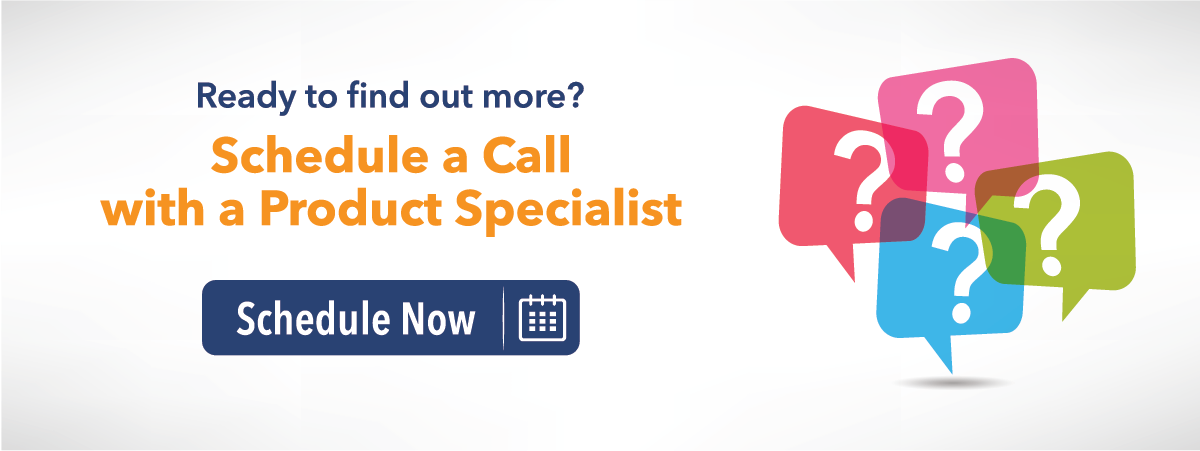
How to Create an Adaptive Company Culture
By Carole Wehn
The pandemic may have eradicated the phrase “but that’s how we’ve always done it.”
Those seven words have been a source of consolation for change-resistant employees. But unfortunately, the phrase is also a roadblock to managers attempting to lead a change effort. But COVID forced us to leave our comfort zones and create new ways of doing business.
Your team has done a great job of adapting during the pandemic. So how do you capitalize on this momentum and get people ready for the next big shift? The answer lies in your company culture.
The Benefits of an Adaptive Culture
In Leading Change, the management thought leader John P. Kotter asserts,
“Truly adaptive firms with adaptive cultures are awesome competitive machines. They produce superb products and services faster and better. They run circles around bloated bureaucracies. Even when they have far fewer resources and patents or less market share, they compete and win again and again.”
Kotter says that an adaptive culture is necessary for an organization to keep up with a rapidly changing marketplace. And this was written in 1996, well before the pandemic and today’s dynamic operating environment.
Today’s business leaders need to be change facilitators. The need to reduce costs, improve quality, enhance productivity, and identify new products and markets never end. But before you start pursuing the latest product development methodology or productivity initiative, examine your company culture.
Employees who operate in a culture that embraces change are excited about the possibilities that adaptation and growth bring.
There are three components to this culture:
- Trust
- Continuous improvement
- Respect
Build a Culture of Trust
Before you can get your employees to embrace the unknown, they must be comfortable in the present. Employees who trust their leaders will not feel as threatened when their world starts to shift.
Open Communication
Good leaders understand the importance of transparency and open communication when implementing organizational changes and during difficult business periods. However, they should continually share business goals and outcomes.
Employees like to own business results. They want to be part of upcoming plans. They don’t want to be surprised by strategic shifts or financial losses. If they feel you are open with them during normal operations, they will be more inclined to trust you when business conditions change or are uncertain.
Authenticity
Staff wants to understand their leaders\’ values and priorities. When their work world is disrupted, they then know where their managers stand. Show them what you stand for every day.
The remote work world has had the unintended benefit of showing team members their managers’ vulnerabilities. They probably glimpsed their leaders’ children and pets in the background on video calls and likely sensed their Zoom fatigue. They may even have seen their managers’ frustration with spotty wi-fi and ever-changing return-to-the-office plans.
Authentic leaders are not afraid to show their teams their struggles and how they have overcome them.
Visibility
“Management by walking around” seems like an old-fashioned concept now that many people work remotely. Not that long ago, you shared lunch with employees in the cafeteria or stopped by their desks to see how things were going. Now you must be more creative.
While no one looks forward to yet another Zoom meeting, one-on-ones and all-hands team updates are important opportunities to connect with your team. And leading by example is paramount. As Tracy Brower observes in her Forbes blog, “Leading Change: 10 Ways Great Leaders Make Change Happen,”
“When you’re ready for people to come back to the office, be sure you’re there yourself. If you want to improve your team’s engagement by meeting regularly, ensure you’re at every session with your camera on.”
Build a Culture of Continuous Improvement
Continuous improvement is about constant change. When your processes are always evolving, your employees cannot get complacent in their roles. They understand that change is about making the company more effective and competitive.
Education
Learning and development are critical drivers of continuous improvement. Lifelong learners welcome the chance to make changes and implement new approaches.
Show your teams that you don\’t know everything and are open to learning new things and improving processes. Your employees will follow suit.
When new processes are put in place, ensure your team is trained on them. You want to ensure their success and continued engagement with the revised procedures.
Blameless Problem-solving
Blameless environments encourage employees to take risks and try new approaches without fear of failure. Let your team attend training on cutting-edge processes. Then encourage them to put their newfound knowledge and ideas into practice. Your team needs to know they are supported when they take intelligent risks, even when some approaches don’t work.
Experimenting with new work models is an excellent opportunity to put this behavior into practice. If employees suggest a hybrid work approach that isn’t effective, let them propose something else. First, make it clear that there are no negative ramifications if the plan doesn’t work well. Then, encourage them to learn from the experience and move on.
Blameless problem-solving is about pinpointing where the process broke down or didn’t function as desired. It’s not about who suggested the idea or dropped the ball. Make sure your team understands that and focuses on what they discovered through the experience.
Innovation
Innovation thrives when employees are encouraged to learn new things and implement their ideas. Provide a supportive environment where they can take risks and experiment with new approaches.
Innovation doesn’t have to entail ground-breaking technologies or new product launches. Being innovative involves trying something different because you realize the status quo is holding you back. It can mean taking a critical look at one’s job responsibilities and finding ways to do them better, faster, and more efficiently.
Some employees may be afraid of exploring new approaches because they don’t know whether they will work. However, things that were “good enough” in the past aren’t good enough to take your business to the next level.
Build a Culture of Respect
MIT/Sloan Management published the top ten elements of culture that matter most to workers, culled from employee reviews on Glassdoor. The most frequently cited issue is respect. Employees want to be treated with consideration, courtesy, and dignity.
Inclusion
Employees want to be included in change initiatives.
When implementing new programs or goals:
- Include employees on planning teams
- Solicit their input from the beginning
- Show them that their opinions matter
As blogger Tracy Brower noted in Forbes, “People are more likely to accept change when they feel a sense of ownership.” This is especially helpful for those employees who typically resist change. These are employees who fear:
- Loss of control
- Possible inability to perform well in the new environment
- Uncertainty of what may be coming down the road
By including employees in planning sessions, you hear their fears and ease their concerns. They, in turn, can aid the change effort by talking to other employees and allaying their worries.
Listening
Employees who resist change efforts only see risks to their status, beliefs, and security. They focus on what they consider threats to the status quo and cannot see the benefits of the change.
Conversely, those who advocate change can get so caught up in the benefits that they forget that some people feel threatened. They need to listen to the perspective of the resisters carefully.
People who feel “heard” are more likely to support a change initiative. So don’t just ask for employee feedback. Instead, let employees express their doubts, concerns, and wishes. Actively listen to what they have to say. Even if you feel the ideas are not practical, hear them out.
Rank-and-file employees often have a valuable perspective on change efforts. A 2013 Strategy&/Katzenbach Center survey noted,
“Transformation efforts are typically decided upon, planned, and implemented in the C-suite, with little input from those at lower levels. This filters out information that could be helpful in designing the initiative while also limiting opportunities to get frontline ownership of the change.”
Listen to your team’s ideas as they share what has worked well for them during the pandemic. Get their thoughts on how their jobs need to change as you design your future workplace. Encourage your team to talk about how to prevent employee burnout.
Recognition
Employee recognition isn’t just about making people feel good. It\’s acknowledgment and respect for an employee\’s contributions. Don’t water it down with the “everyone gets a trophy” mentality or the generic “good job.” Let people know exactly what they did to meet the customer’s needs or improve the company’s results.
Recognition plays a vital role in a period of change. It validates employees’ adjustment to the new environment and new way of doing things. It also acknowledges that people have been working harder and have had to get outside their comfort zones.
The Wall Street Journal recently noted that people working from home are putting in more hours since they aren’t dealing with commutes. For example, logging out to pick up kids after school and then logging back in after putting them to bed adds to the number of hours worked. Let your team know that you see this and appreciate it.
Accountability
While employees want to feel empowered and trusted, they also welcome accountability. Tell them what you want as changes are rolled out, and they will deliver. Ownership of results always drives higher performance.
Conversely, hold accountable those who cling to prior work rules and processes. Reinforce the importance of continual change and growth, both to the individual and the organization.
Creating a Culture of Change
An adaptive culture is characterized by trust, continuous improvement, and respect. How does your company culture measure up?
Culture change can be facilitated just like any other initiative. Decide upon a course of action, including the behaviors you want to see in your company. At CultureWise, our company behaviors, or Fundamentals, as we call them, include several that support an adaptive culture: Listen Generously, Celebrate Success, and Practice Blameless Problem-Solving.
Communicate these behaviors to your employees by reinforcing them with a series of rituals. These rituals allow you and your team to teach and practice the behaviors consistently.
Learn more about this process and find resources for implementing cultural change at staging-culturewise.kinsta.cloud. You can also download a free two-chapter excerpt from CultureWise CEO David J. Friedman’s book Culture By Design, which walks through our approach to culture implementation. And subscribe to Culture Matters, our free weekly newsletter on all things related to company culture.



